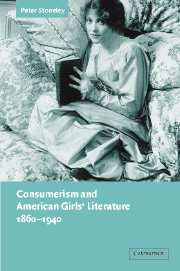4 - Romantic speculations
Published online by Cambridge University Press: 22 September 2009
Summary
Much of the fiction discussed so far, though it attempts to negotiate social and economic change, remains pre-consumerist in its overall tendency. It is aware of growing prosperity and the democratization of polite culture, but its response is often ambivalent. It exhibits a fear of loss of caste, especially in relation to the rise of a mobile urban class. There is a corresponding sense that democratization involves vulgarization: new money pays for the shows of gentility, but misses out on its values. But there is also a possibility of critique from within the pre-consumerist model: an early heroine such as Jo March is hungry for alternative worlds, in which radically different identities may be imagined and performed (and this is to be found in other contemporary texts, such as Gypsy Breynton [1865] and What Katy Did [1872]). A restless, theatricalizing spirit manifests itself, and is never entirely quelled by a reformative, rule-bound ethos. The writers of Alcott's generation value the restless element, and relate it, in Romantic fashion, to the child's connectedness to Nature. Jo loves to run and to climb trees, and girls more generally are shown to have a spontaneous and unself-conscious love of “romping.” This first generation of writers was strongly influenced by Romantic ideas, but a conformist morality is still the primary context of the girl's self-exploration. However attractive Romantic “wildness” may be, it is also the sign of an unregenerate nature.
- Type
- Chapter
- Information
- Consumerism and American Girls' Literature, 1860–1940 , pp. 61 - 70Publisher: Cambridge University PressPrint publication year: 2003

